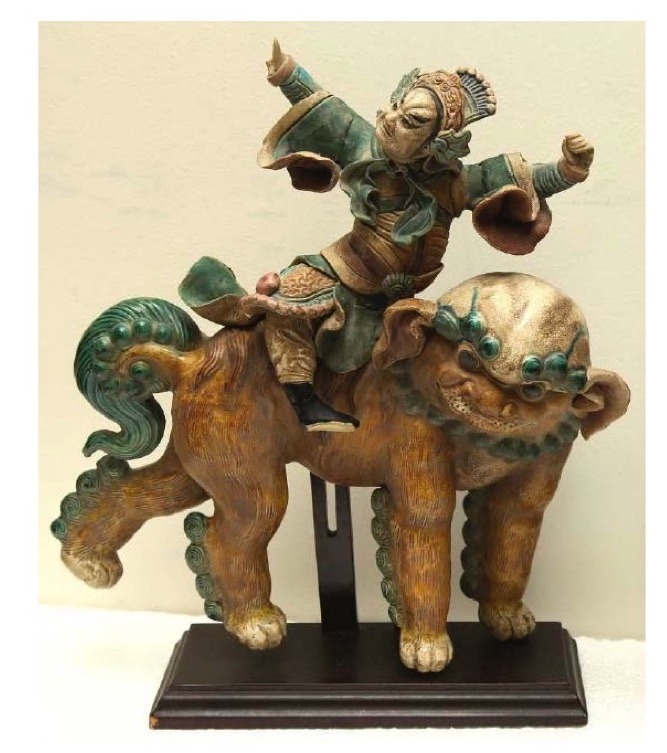Scena di Battaglia by Matteo Stom, 1643-1702, Oil on canvas
160 x 120 cm
What Defines an Antique Piece?
An antique piece is defined by its age, craftsmanship, and historical significance. Typically, an item must be at least 100 years old to be considered an antique.
However, the essence of an antique goes beyond mere age. It encompasses the story, culture, and history embedded in the piece. The craftsmanship of these items, often hand-made with meticulous attention to detail, showcases skills that have often been lost or evolved over time.
Antiques are relics of the past, encapsulating the era they were created in, whether it be through the materials used, the techniques employed, or the style and design reflective of that period.
They are artifacts that have withstood the test of time, offering a tangible connection to our history and heritage.
Circle of Salvator Rosa, Marina delle Torri, European, 18th-19th Century, Oil on Canvas
165 x 132 cm
What Do Antiques Bring to the Home?
Antiques bring a unique charm and character to any home, blending history with modernity.
These pieces add depth, narrative, and elegance to your living space.
Each antique item carries its own story, enriching your home with a sense of heritage and timeless beauty.
Beyond aesthetics, antiques evoke curiosity and conversation, making them perfect centerpieces or accents in any room.
They connect us to the past, allowing us to appreciate the craftsmanship and artistic achievements of bygone eras.
Furthermore, antiques are collectibles that can increase in value over time, making them not only a visual delight but also a smart investment.
Bronze Elephant Book Ends
19th-20th Century
How Do We Connect with Antiques?
Connecting with antiques is an emotional and intellectual journey. It begins with an appreciation of the artistry and details behind each piece.
When you bring an antique into your home, you’re not just acquiring an object; you’re embracing a piece of history and the magical sensations that it brings.
Antiques inspire us to reflect on our own lives and heritage, providing a sense of continuity and permanence in a rapidly changing world.
They also appeal to our sense of wonder, reminding us of a whimsical, perhaps more elegant past.
Stream Along the Mountains by Christian DelphinWexelsen, Norway 1865, Oil on canvas
213 x 152.5 cm
Example “Stream Along the Mountains”
“Stream Along the Mountains” is an exquisite painting from 1865, capturing the serene beauty of Norway’s landscapes. This piece depicts a tranquil stream meandering through the mountains, with quaint cottages dotting the scene.
The artist’s use of light and shadow brings the natural beauty of the Norwegian countryside to life, creating a sense of peace and tranquility.
The meticulous detail in the cottages and the lush greenery demonstrates the artist’s skill and dedication to realism, making it a perfect example of how art can capture the essence of a place and time.
Gentlemen Posing on Stairs by Alex De Andreis, Belgian, 1871-1939, oil on canvas
117×146 cm
Painting #2: “Gentleman Posing on the Stairs”
” Gentleman Posing on the Stairs,” is a curios Belgian masterpiece painted between 1871 and 1939, portrays a poised gentleman standing on a staircase, dressed in a striking pink outfit and holding a cane.
The painting exudes elegance and sophistication, capturing the fashion and demeanor of the era. The artist’s attention to detail in the gentleman’s attire and the architectural elements of thestaircase highlights the refined tastes of the time.
This piece not only serves as a window into the past but also as a statement of style and grace, adding a touch of historical charm to any collection.
Chinese Polychrome Foo Dog and Warrior, 19th Century
15x33x41 cm
Sculptures from the 19th-20th Century
Sculptures from the 19th and 20th centuries stand out due to their innovative techniques and thematic diversity for the time period.
Unlike earlier periods, these sculptures often explored new materials and forms, reflecting the changing artistic sensibilities of the time.
They range from realistic portrayals to abstract forms, each piece telling its own story. In the home, these sculptures add a sense of sophistication and artistic flair.
They serve as focal points, drawing the eye and sparking conversations about art and history.
Their presence can transform a space, imbuing it with cultural and intellectual richness.
Philosopher, Bronze on Marble Base, 19th Century
Bronze Sculpture: The Philosopher
“The Philosopher,” a bronze sculpture on a marble base, depicts an ancient Roman philosopher adorned in a detailed robe. This piece captures the intellectual spirit of the classical world, inviting viewers to ponder deep philosophical questions.
The incredible detail in the sculpture showcases the artist’s mastery in capturing the essence of contemplation and wisdom. Such pieces can inspire the inner philosopher in all of us, reminding us of the value of reflection and critical thinking.
They serve as a bridge between the past and the present, connecting us to the timeless pursuit of knowledge.
Discover More exquisite Artwork from this collection on the Bingyol’s website!
Japanese Meiji Bronze of Tiger on Wooden Stand, 19th-early 20th Century
80x50x54 cm
Japanese Meiji Bronze: Tiger on Wooden Stand
This Japanese Meiji bronze sculpture of a tiger on a wooden stand symbolizes strength and resilience.
The Meiji era (1868-1912) was a period of significant transformation in Japan, and this sculpture reflects the era’s artistic achievements.
The tiger, a powerful and revered creature in Japanese culture, is depicted with striking realism and attention to detail.
This piece not only adds an element of exotic beauty to your home but also serves as a symbol of courage and determination. It connects the viewer to the rich cultural heritage of Japan and the artistic innovations of the Meiji period.
Antique Paintings and Sculptures: Capturing Life in a Timeless Manner
Antique paintings and sculptures have the unique ability to capture moments in time, preserving them for future generations. These works of art provide a window into the past, allowing us to experience the world as it was seen by artists centuries ago. They convey the emotions, stories, and cultural values of their time, making them timeless pieces that transcend generations.
Antique artworks are more than just decorative items; they are historical documents that tell the story of humanity’s artistic journey. By bringing these pieces into our homes, we honor and preserve the artistic legacy of our ancestors.
European banquette, 19th-20th Century, Wood
136x65x93 cm
Antique Furniture: What They Bring to the Home
Antique furniture brings unparalleled charm, elegance, and functionality to any home.
These pieces are often handcrafted with exquisite detail and superior craftsmanship that modern mass-produced furniture lacks.
Each item is unique, with its own story and character, adding a layer of depth and history to your living space. Antique furniture not only enhances the aesthetic appeal of your home but also offers durability and longevity.
They are timeless pieces that can be passed down through generations, becoming cherished family heirlooms. In a world dominated by disposable culture, antiques remind us of the value of quality and tradition.
Gilt Wood and Silk 3 Panel Screen, 19th Century
137x4x173 cm
Chinese Ceramic Elephant, 19th-20th Century
17x13x14 cm
Is There a Need for More Antiques in Dubai?
Dubai, a city renowned for its modernity, luxury, and forward-thinking approach, is increasingly becoming a hub for art and culture. With its soaring skyscrapers, opulent lifestyle, and cutting-edge architecture, one might wonder if there is a place for antiques in such a contemporary setting. The answer is a resounding yes.
The demand for antiques in Dubai is not only present but growing, as more residents and collectors seek to blend the past with the present, adding depth and richness to their living spaces.
Dubai’s rapid development has created a unique environment where tradition and innovation coexist. The city’s diverse population, which includes expatriates from all over the world, brings with it a variety of cultural tastes and preferences.
This diversity fosters an appreciation for antiques, as people seek to incorporate pieces that reflect their heritage and history into their homes.
Antiques offer a sense of permanence and continuity in a city that is constantly evolving. They provide a counterbalance to the sleek, modern aesthetics that dominate Dubai’s skyline. By incorporating antiques into their decor, residents can create a harmonious blend of old and new, enhancing the overall ambiance of their homes.
This fusion of styles not only adds character and uniqueness to living spaces but also creates a more inviting and personal environment. Chinese
Bingyol’s Art Gallery: Connecting the Past with the Present
Bingyol’s Art Gallery, located in the West Crescent of Palm Jumeirah at the Kempinski Hotel and Residence, is a Fine Arts Gallery offering beautiful paintings, sculptures, and antique pieces from around the world to the Dubai community. Hosting creative exhibitions and art lectures, Bingyol’s Art Gallery strives to enrich the cultural landscape of Dubai.

















